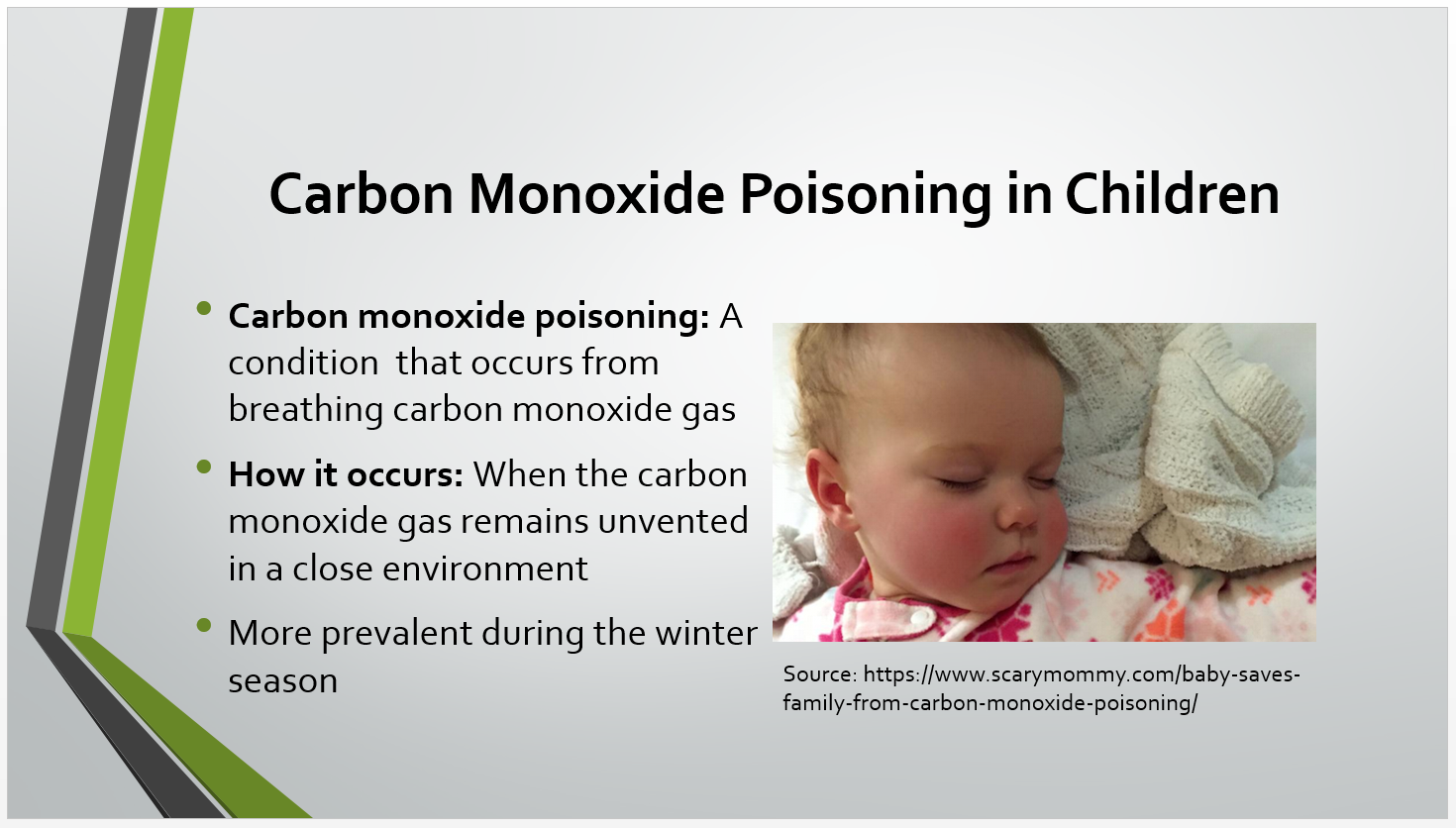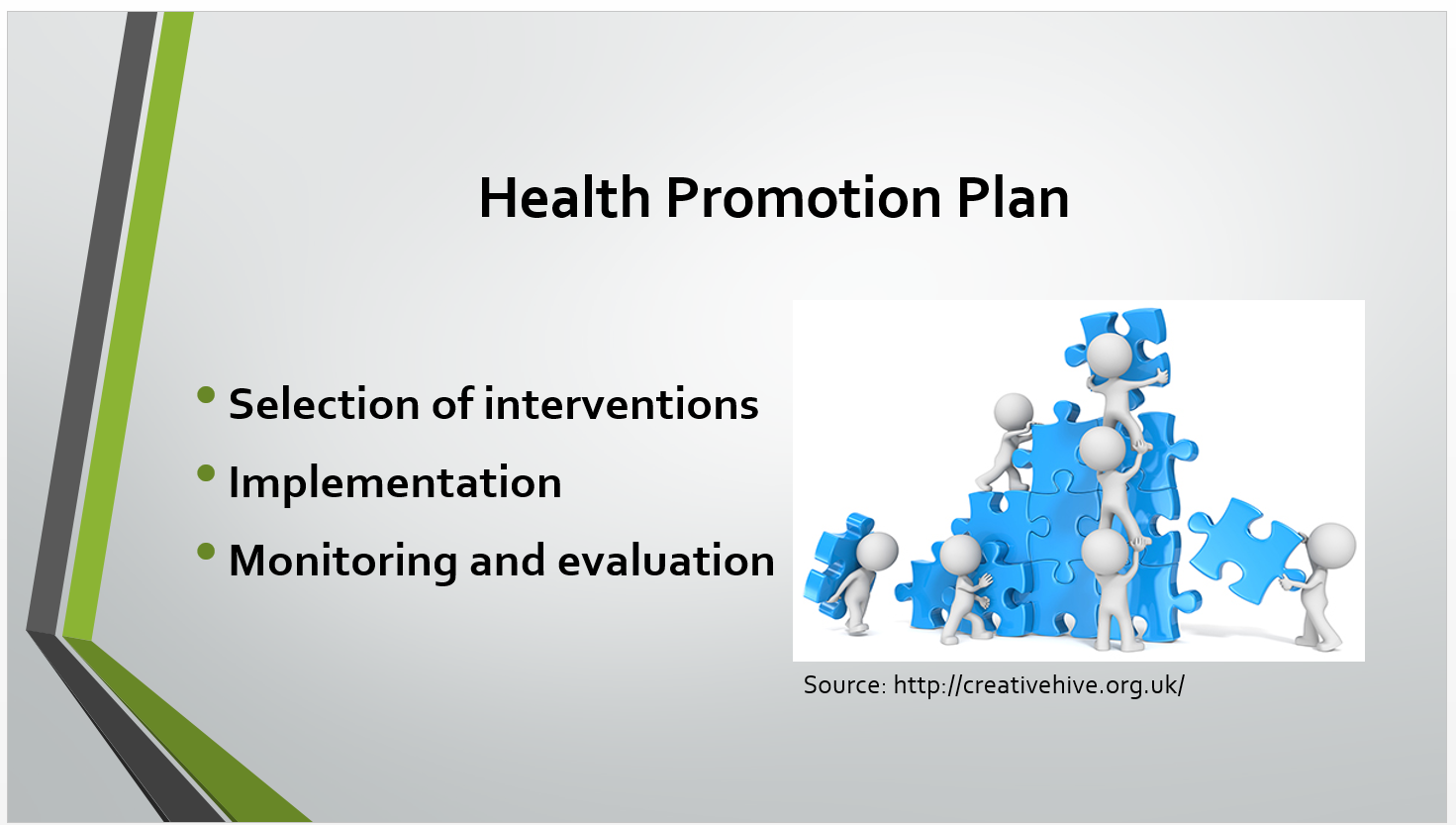Environmental Factors and Health Promotion Presentation: Accident Prevention and Safety Promotion for Parents and Caregivers of Infants


Carbon monoxide poisoning is a condition that occurs when an individual breaths carbon monoxide for an extended period of time. It is a condition that can be fatal in adults and even more likely to lead to fatality in infants (Fruchtman et al., 2020). Therefore, carbon monoxide poisoning is usually treated as an emergency as soon as it is diagnosed/identified.
Carbon monoxide gas is colorless and odorless making it very difficult to detect and that is what makes it very lethal. Carbon monoxide poisoning occurs when the gas remain unvented outside a closed environment. Some of the potential sources of carbon monoxide gas within the home setting includes any appliances that uses coal, oil, gas, or wood, for example a cooking stove, an oven, clothes dryers to list a few (McKenzie et al., 2017).

The breathing rate of infants is more than that of adults. This makes them to be more susceptible to carbon monoxide poisoning. Likewise, the negative impact of the condition is worse in infants that it is in adults, given the fragile nature of the body organs which are still developing (Fruchtman et al., 2020).
Due to the buildup of carbon monoxide in the child body, vital organs like the brain and heart end up being deprived of the much needed oxygen, which ay end up leading to permanent damage and in severe cases even death. In some cases, the impacts are felt weeks later in targeted body systems like the neurological system leading to a condition known as the delayed neurologic syndrome (Sonmez et al., 2018).

The health promotion plan will have seven major steps, the first being collection of data. The data on the prevalence and impact of carbon monoxide poisoning and how it occurs will assist in creating a suitable plan to counter the issue. The next step is setting goals and objectives. The health promotion goals need to be SMART.
The third step of the plan is evaluation of best practices. The best practices need to be based on evidence-based data (Fisher et al., 2016). After evaluation and listing of best practices, a review of the required resources is then performed to assess the viability of the different methods to implement in the health promotion.

The fifth step is selection of the best intervention from a list of best practices, based on the availability of resources and ease of implementation. The sixth step is implementing the health promotion. For the Implementation to be successful; it will be important to collaborate with other stakeholders. The final step is monitoring and evaluating the impact of the health promotion.

One of the simplest ways to avoid carbon monoxide poisoning is by ensuring that the house is well ventilated. This will mean that the air circulation is optimum reducing the likelihood of CO poisoning. Another recommendation is to install a CO detector that sounds of an alarm in case the CO levels within the room is above the normal levels (McKenzie et al., 2017).
However, it is important to ensure that the system is well maintained with batteries replaced every now and then. It is also recommended that when turning on the car engine, the garage doors should be opened. Checking that all non-electrical heating appliances like charcoal stoves, gas burners, wood furnace, to list a few, have well maintained chimneys.

Another recommendation is to carry out routine maintenance of chimneys and other ventilation areas to prevent blockages that confine the CO gas within a closed environment. It is also essential to use gas appliances as required to prevent incidents of leakages that could lead to CO poisoning.
Lastly, is to ensure caution is used when working with solvents in a house with an infant living within. Some certain solvents, when inhaled are broken down to carbon monoxide which can lead to poor health outcomes for the infant.